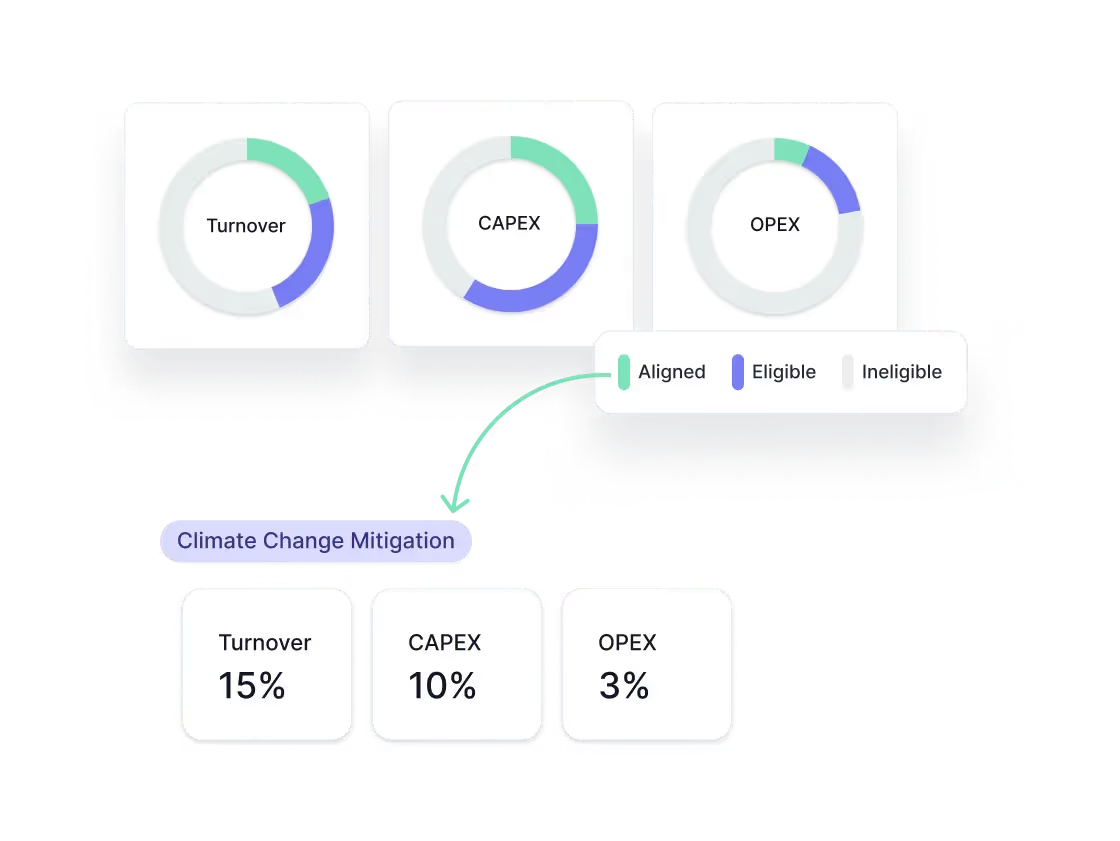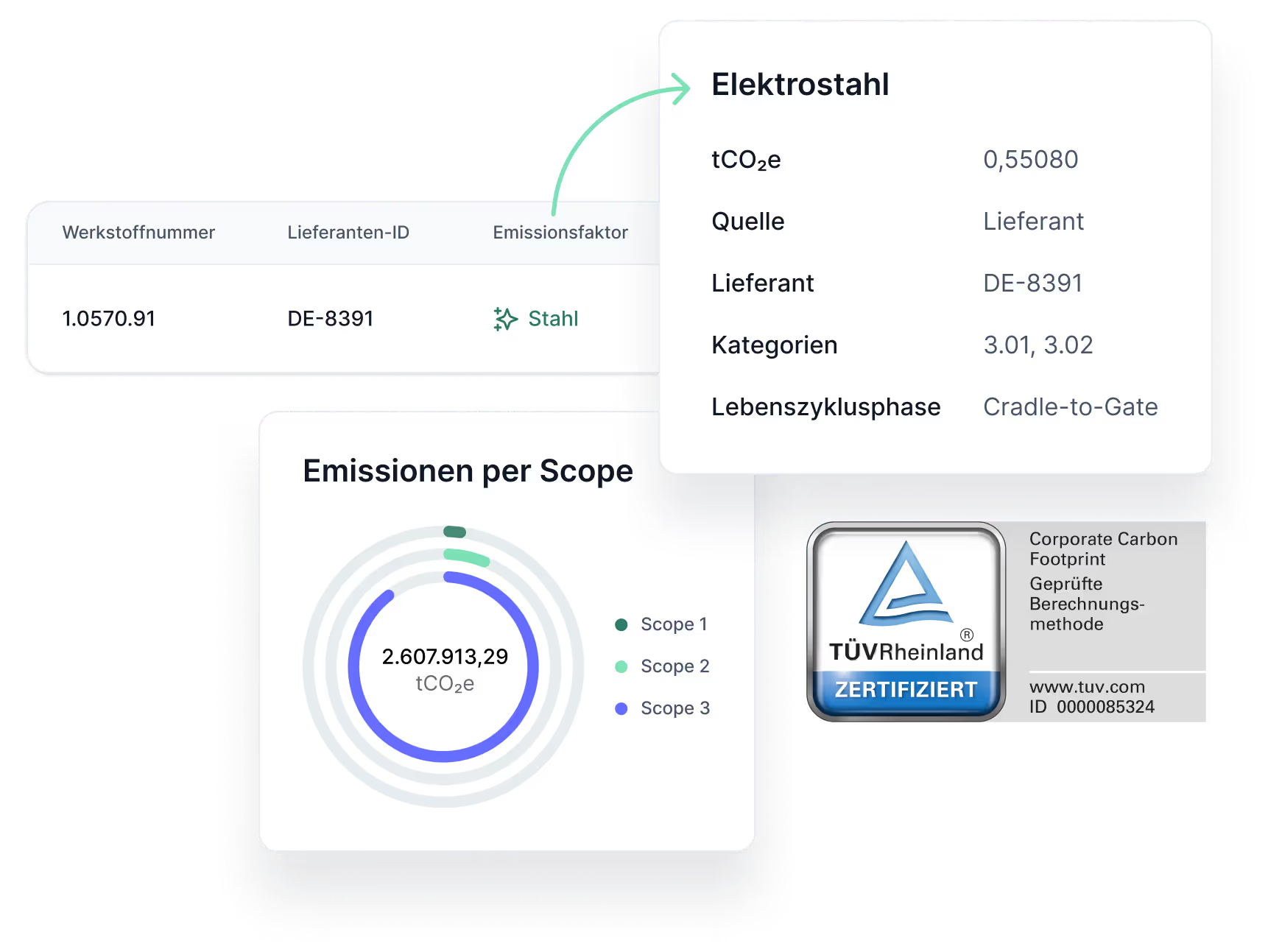Track taxonomy-relevant activities, ESG data, and work areas – including eligibility assessment and taxonomy alignment directly in Tanso. Optimized for manufacturing SMEs.





Streamlined compliance: Fulfill CSRD, EU Taxonomy, and GRI with ease.
Identify optimization potential in your ESG data and define targeted actions to improve your sustainability performance.
Central integration of CCF, PCF, and CSRD data.






















Implementation, regulatory details, and more. Find your answers here.
Taxonomy-conformity means that an activity is not only taxonomy-compliant, but also fulfills all the necessary criteria of the EU taxonomy. It must contribute significantly to at least one environmental objective, not significantly harm the other environmental objectives (Do No Significant Harm principle), comply with the minimum protection measures and meet the applicable technical assessment criteria. A taxonomy-compliant activity is therefore fully in line with the requirements of the EU taxonomy.
Taxonomy-eligibility means, that an economic activity basically fits into the categories of the EU taxonomy and can be assigned to one of the defined environmental objectives. The activity is therefore relevant for the taxonomy, but it has not yet been assessed whether it meets the requirements of the EU taxonomy.
Companies must report on the EU Taxonomy if they fall under the Corporate Sustainability Reporting Directive (CSRD) or the Non-Financial Reporting Directive (NFRD).
The CSRD and the EU Taxonomy complement each other and work closely together: All companies that are required to report under the CSRD must also report on the EU Taxonomy.Both reports ultimately feed into the sustainability statement in the management report.
The EU Taxonomy is a transparency tool based on a clearly defined classification system. It translates the EU's climate and environmental goals into specific criteria for certain economic activities, and thus serves as a guide for private investment in sustainable projects.